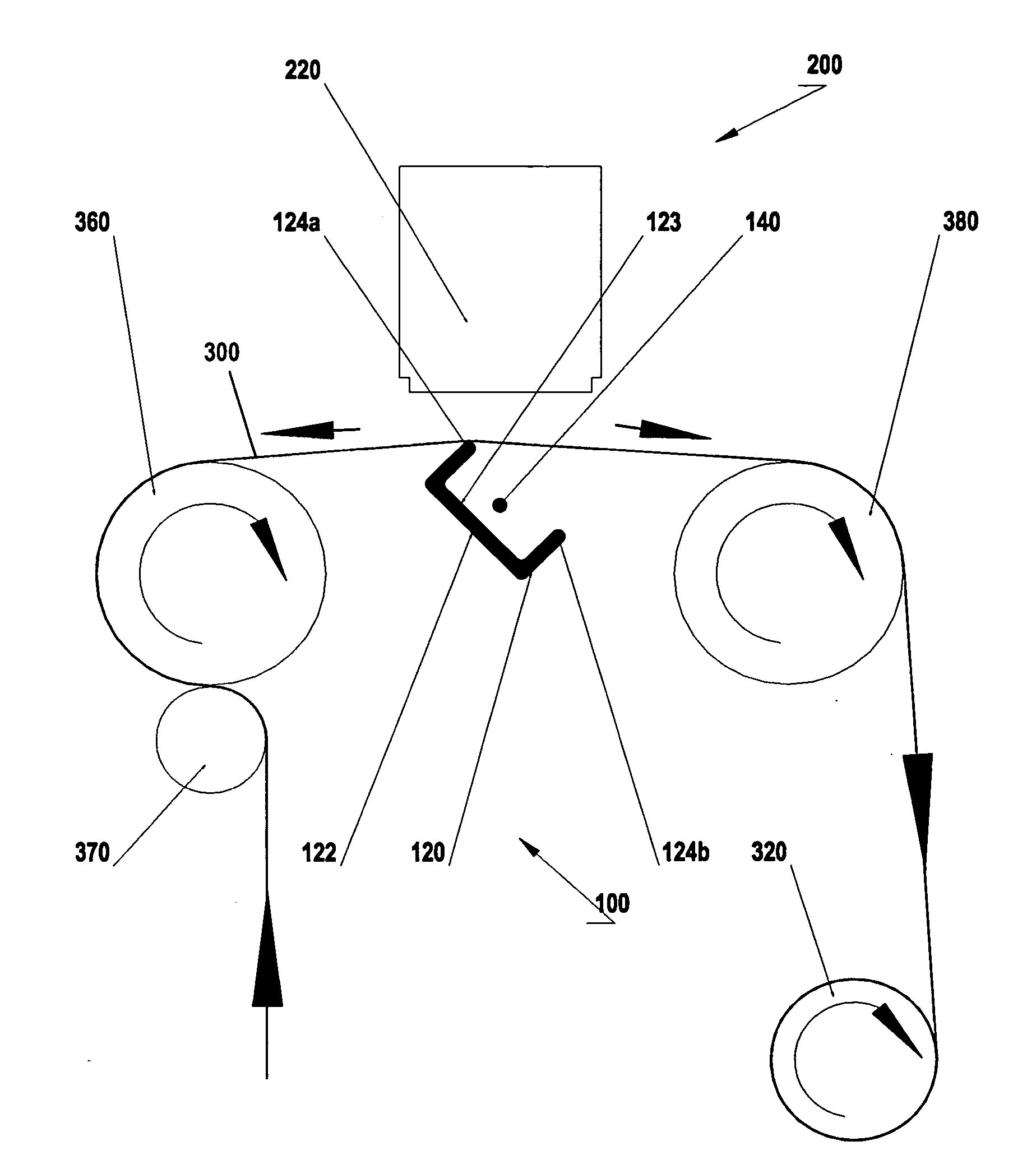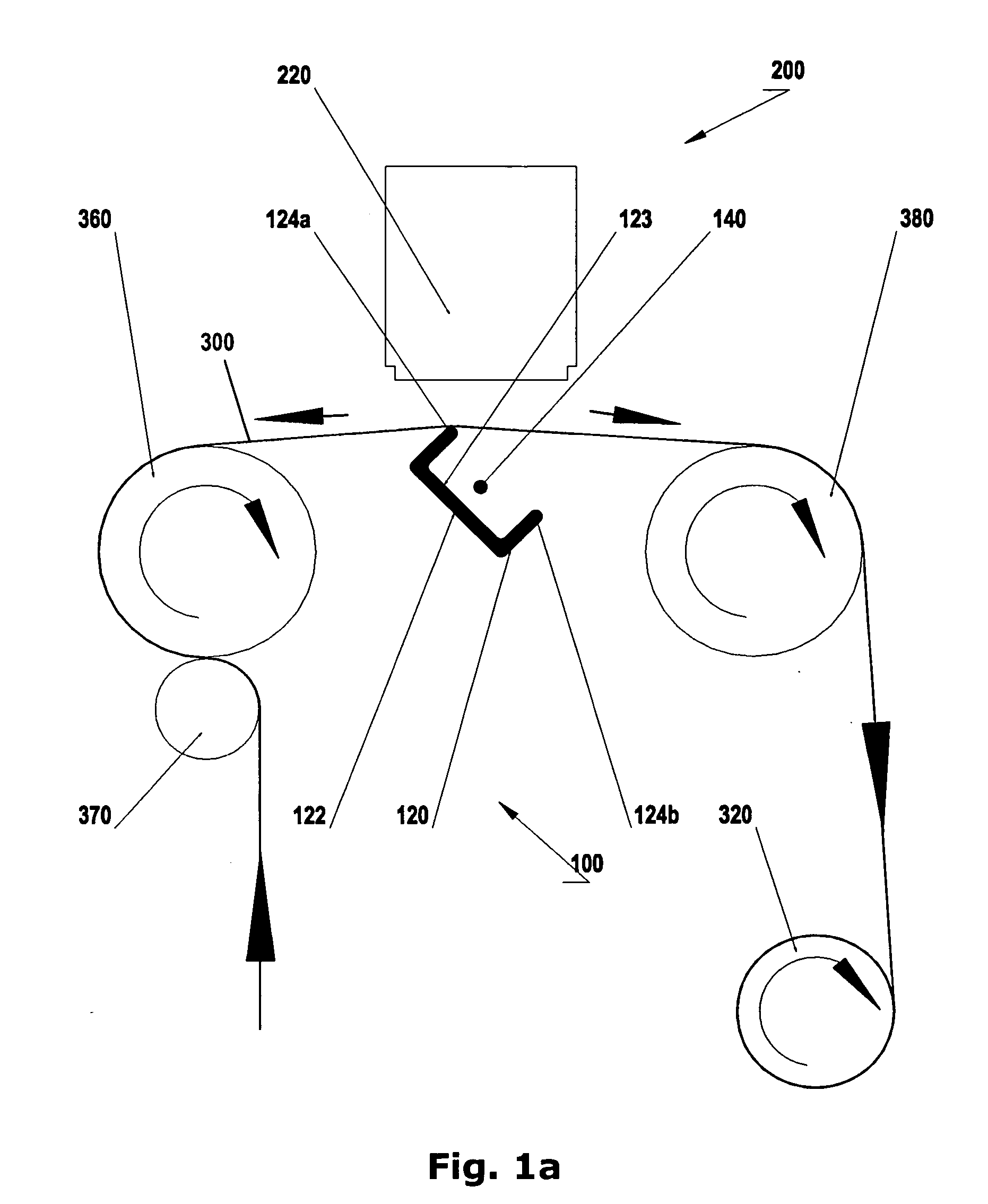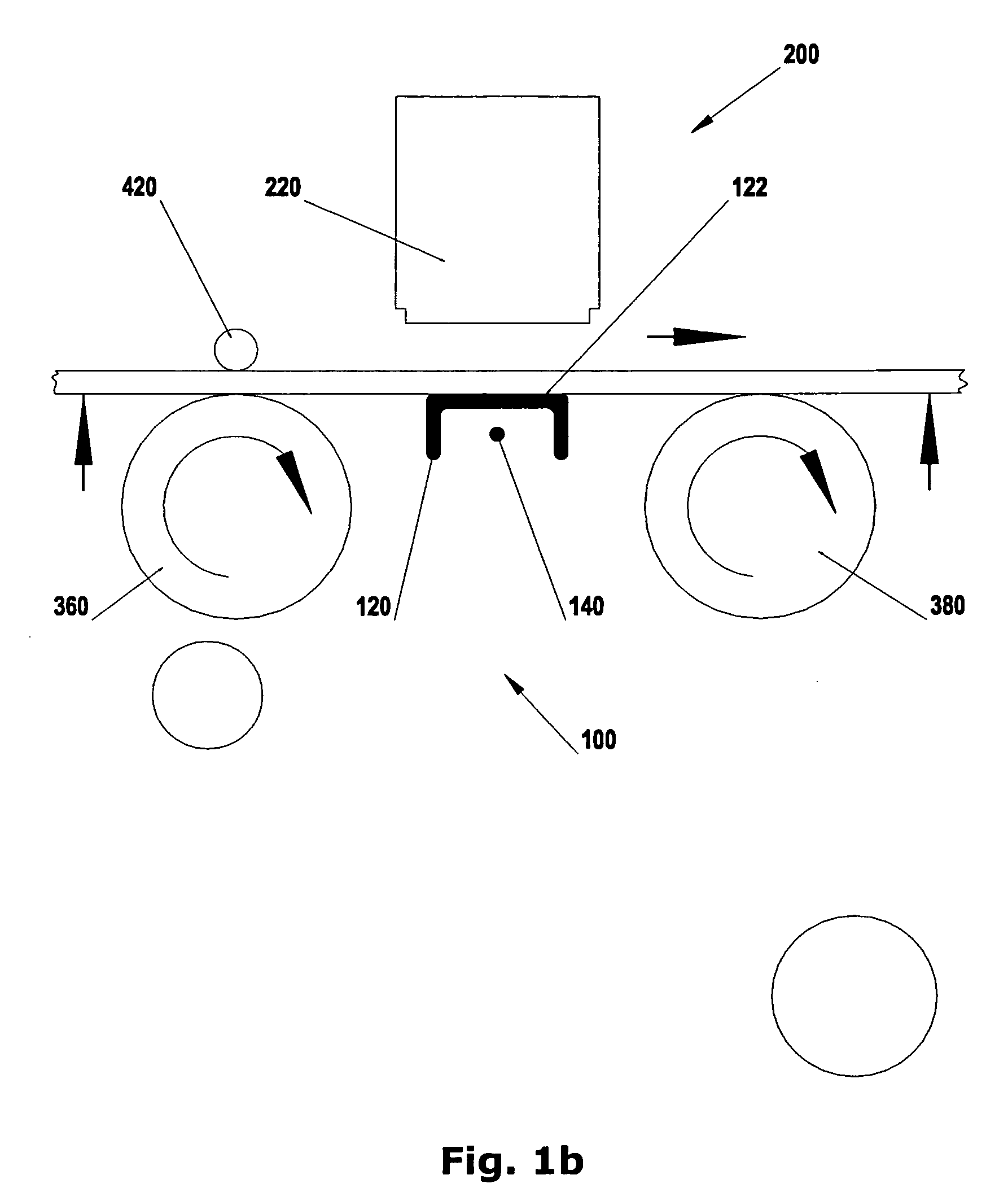Reversible printing table
- Summary
- Abstract
- Description
- Claims
- Application Information
AI Technical Summary
Benefits of technology
Problems solved by technology
Method used
Image
Examples
first embodiment
[0044]Reference is now made to FIGS. 1a and 1b showing a reversible printing table 100 according to the invention incorporated into a digital inkjet printer 200 that can print onto material fed by two separate feed modes: either onto a continuous flexible sheet material fed by a roll to roll system, or onto discontinuous sheets such as previously printed on flat-bed printers.
[0045]In order to achieve high resolution printing onto a flexible substrate, such as fabric or paper for example, it may be desirable to stretch the flexible substrate over a knife-edge opposite the print head 220. The section of the substrate being printed upon is kept tensioned thereby, making it stiffer and less prone to distortion. Moreover, flexible material under tension undergoes strain and thus a larger area of material is presented below the print head, thereby enabling printing with a higher resolution onto the taut material, and resulting in a higher resolution when tension is released.
[0046]On the o...
fourth embodiment
[0057]FIG. 4 shows the printing table 4100 according to yet the invention. Here the rotatable printing table 4100 is provided with a triangular cross section and mounted upon an axle 4140 such that it may be rotated to present a side 4122 of the triangle or an acute vertex 4124 of the triangle towards the print head 4220. If the vertex 4124 is sufficiently acute, for example less than 45 degrees, the edge subtended along the triangular beam 4120 at the vertex of its cross-section forms a knife-edge. A flexible substrate may then be stretched between two rollers 4360, 4380 over the knife-edge. Alternatively, with a side 4122 of the triangular cross section 4120 presented towards the print head 4220, a flat printing table 4100 is provided more appropriate for rigid substrates 400.
[0058]It will be appreciated that triangular printing tables 4100 actually provide the possibility of presenting three faces to the print head and three vertices. Some or all the faces may be different, or si...
fifth embodiment
[0060]FIGS. 5a and 5b show a schematic representation of a rotatable printing table 5100 according to the invention. The printing table 5100 has two substrate supports 5122, 5124 mounted upon a rotatable beam 5120 and which may be presented to a print head 5220 selectively to provide two printing modes. The first printing mode, shown in FIG. 5a, is particularly appropriate for printing onto porous media 500, and in particular, for printing onto meshes, where substantial amounts of ink pass through the media. The first printing mode, is also useful for printing onto flags, where both sides of the media are viewed. The second printing mode, shown in FIG. 5b, is generally more appropriate printing onto non-porous substrates 600.
[0061]Referring now specifically to FIG. 5a, the printing table 5100 is shown, configured to print onto porous substrates 500, particularly mesh, but also webbing, netting, woven fabric or the like. The support beam 5120 is configured such that a U-shaped substr...
PUM
 Login to view more
Login to view more Abstract
Description
Claims
Application Information
 Login to view more
Login to view more - R&D Engineer
- R&D Manager
- IP Professional
- Industry Leading Data Capabilities
- Powerful AI technology
- Patent DNA Extraction
Browse by: Latest US Patents, China's latest patents, Technical Efficacy Thesaurus, Application Domain, Technology Topic.
© 2024 PatSnap. All rights reserved.Legal|Privacy policy|Modern Slavery Act Transparency Statement|Sitemap



